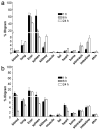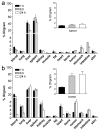Evaluating the pharmacokinetics and in vivo cancer targeting capability of Au nanocages by positron emission tomography imaging
- PMID: 22690722
- PMCID: PMC3404261
- DOI: 10.1021/nn300464r
Evaluating the pharmacokinetics and in vivo cancer targeting capability of Au nanocages by positron emission tomography imaging
Abstract
Gold nanocages have recently emerged as a novel class of photothermal transducers and drug carriers for cancer treatment. However, their pharmacokinetics and tumor targeting capability remain largely unexplored due to the lack of an imaging modality for quick and reliable mapping of their distributions in vivo. Herein, Au nanocages were prepared with controlled physicochemical properties and radiolabeled with (64)Cu in high specific activities for in vivo evaluation using positron emission tomography (PET). Our pharmacokinetic studies with femtomolar administrations suggest that 30 nm nanocages had a greatly improved biodistribution profile than 55 nm nanocages, together with higher blood retention and lower hepatic and splenic uptakes. In a murine EMT-6 breast cancer model, the small cages also showed a significantly higher level of tumor uptake and a greater tumor-to-muscle ratio than the large cages. Quantitative PET imaging confirmed rapid accumulation and retention of Au nanocages inside the tumors. The ability to directly and quickly image the distribution of Au nanocages in vivo allows us to further optimize their physicochemical properties for a range of theranostic applications.
Figures





References
Publication types
MeSH terms
Substances
Grants and funding
LinkOut - more resources
Full Text Sources
Other Literature Sources

